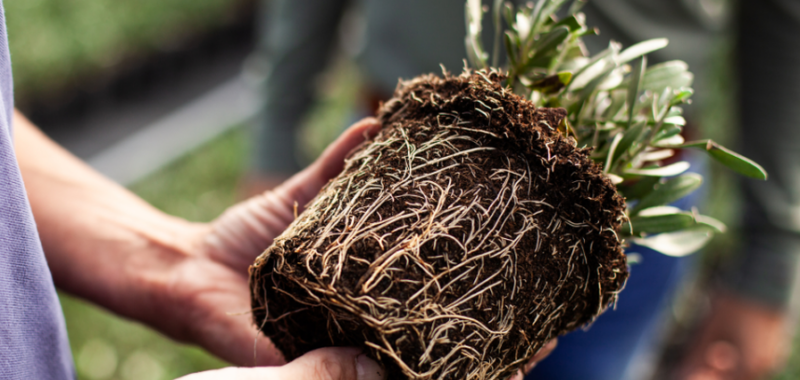
Dr. Brian Schulker says Jiffy’s peat-free blends combine coco products, wood fibers, pine bark, minerals, compost, and clays to deliver air-filled porosity, drainage, and stability. Photo: Jiffy Products International
Greenhouse Grower’s March 2024 issue focused on how concerns over peat supplies are leading to new innovations, as well as best practices for being efficient in how you use peat (you can learn more here). Here, we go in depth with Business Development Manager Growing Media Constituents at Jiffy International, to learn more about what’s happening in the market.
Brian Sparks: Let’s start with where we’re at with peat supplies at the moment.
Brian Schulker: Everyone knows about the peat shortage going back to 2020. You had the COVID-19 boom where everybody stockpiled their product because of massive plant sales. We were having a better harvest year, but people were paranoid that we were going to run out of product. Fast forward two years, when we had back-to-back historically low harvests.
Today, the big concern is how you get your peat to go further. Jiffy has production facilities in Canada, the U.S. and Europe, and we tackle each market differently. The European market is being pushed with lot of countries trying to mandate peat-reducing products or peat-free products by as early as 2025 and as late as 2040. So as a company, we’re having to pivot in different directions. I think there us going be a push in the U.S. as well over the next few years for peat-reduced products. You have alternatives, of course. Coconut coir is one of the biggest materials you can use; it has a more neutral pH, can be a consistent product depending on where you get it from, and is very well-liked by growers. The downside is that it comes from places that are far from most growing operations in North America and Europe, such as Asian countries near the equator. So transportation and logistics become a nightmare. Using it would be a fantastic change for the future, but is it sustainable, is it good for the environment, and can we get it to growers for a cheaper cost to compete with peat grown in the Northern Hemisphere?
Brian Sparks: Can you talk more about any other alternative products to peat?
Schulker: Wood fiber is the next up and coming material. We see people using it at 30% in their blends. On a broader level, it’s both a blessing and a curse for the growing media industry that people seem to think that any waste product can be a substrate. When I get calls about this, I tell people that technically you can grow plants in almost anything. However, the product you choose should be industry specific. It has to be consistent, it needs to have the right physical and chemical properties, and you have to be able to produce it on a large scale to get people to actually buy in.
Brian Sparks: How does the type of crop that you’re growing in a greenhouse dictate the type of alternative mixture that might work best for you?
Schulker: I think crop-specific substrates are definitely the wave of the future. For example, if you mix wood fiber and peat, you have to do bring up the pH to put it into a neutral state for plants to grow, or you can use that same product with no lime, and some plants will love it. It’s just very, very plant specific. With the indoor ag market exploding, you’re going to see even more of this.
Brian Sparks: What excites you the most about the future of this industry segment?
Schulker: As I went through grad school, I saw a massive changing of the guard. People in their sixties and seventies were retiring, and a new younger generation was taking over. I’m seeing that a lot in the floriculture and greenhouse industry as well. You see people adding new ideas and completely changing what we’re used to. I graduated from North Carolina State University with a PhD in May, and since I was there for five years, I witnessed the changes pre-COVID, during COVID, and post-COVID. Post-COVID, each year we have broken records for the most undergraduate students coming into horticulture and making that their degree program. Maybe it was everyone understanding that you need plants, or just people wanting to try something new.

